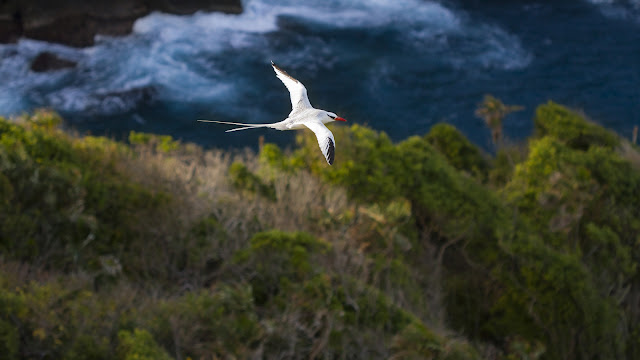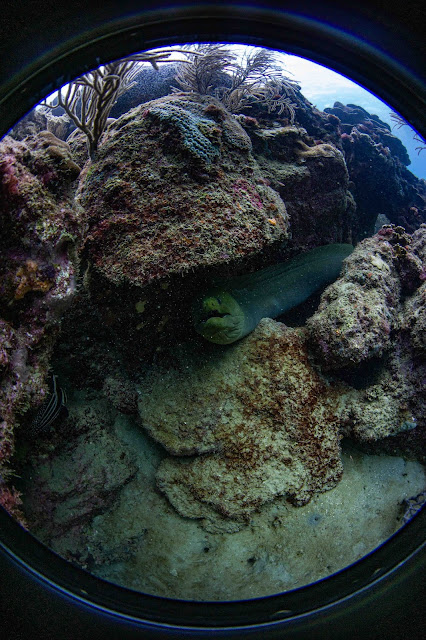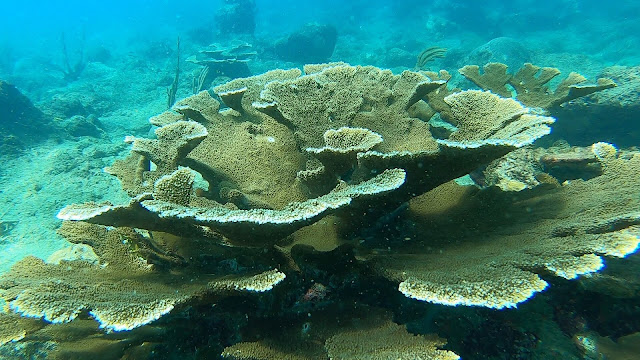Alternatives for Sustainable Tourism in Tobago
Anjani Ganase, Trinbagonian marine
biologist, continues her weekly exploration of islands and the ocean. Today,
she looks at alternatives in sustainable tourism through conservation and
education, and imagines applications for the tremendous diversity of our own
Tobago. This feature was first published in the Tobago Newsday on Thursday October 13, 2016
Follow Anjani Ganase on twitter:
@AnjGanase
Although
Tobago has been tied to Trinidad for the past 127 years (since 1889), it is
distinctly different in a lot of ways. For one it has built its own reputation as
the quintessential tropical Caribbean island. Over the years, more people remember
travelling to Tobago on family vacations than to Trinidad. It is considered to
be the truer Caribbean island, less altered and more pristine. Even Trinis know
this because it is where we go for a holiday. Tobago has a group of dedicated
visitors, and we want to preserve this following and maintain these connections.
But do we think that we can grow this market and develop without compromising our
land and seascapes?
Tobago
is similar to many other small island states and developing countries that have
decided to make a shift from resort style tourism -
which relies on large scale heavy construction, with severe alterations to the
landscape - to dispersed and diversified forms of tourism, where the visitor is
given multiple options for activities, accommodation and encounters. The product is the island,
nature, people and culture; the way of life.
This week we look at two alternative
options for expanding and developing the tourism sector, but with sustainability
built in, where the focus is on engaging the visitor on a personal and
authentic level and one that is mutually respectful.
 |
| The beach at Castara, Tobago. Photo by Anjani Ganase |
THE NATURE ISLAND
Located farther along our island
chain is Dominica, an island slightly bigger and more populated than Tobago. This
volcanic island is home to a rich rainforest, over 350 streams and
well-recorded diversity of animal and plant life. Also similar to Tobago,
Dominica’s rainforest is protected. In the 1970s there was a plan for a mass
tourism to be brought to the island, as was the approach on other Caribbean
islands; however their beaches were shaded by steep cliffs and had minimal white
sand to draw the crowd. In addition, there was an expectation of huge
infrastructure that would be built to compete for the tourists attracted to the
other sunnier islands.
It was at this point that the
government decided to go in a different direction. Dominica looked at its
identity, and shifted focus to promote small-scale local tourism (Weaver 2004).
They would appeal to visitors who were not just interested in paradise but also
willing to have an adventure and real encounters with local cultures. Dominica promoted
itself as the Nature Island of the Caribbean. By preserving nature and the communities
connected to it, it attracted a special sector of visitors. This format is
supported on all levels from the community to government and fosters
small-scale, locally managed tourism. Everybody is responsible for the product.
Everybody earns from it. Niche attractions include activity-based tourism –
birding, whale watching, kayaking, hiking, diving and snorkelling.
A significant achievement is the development of the Waitukubuli national trail 184 km running
north- south along the full length of the island. The trail crosses two nature
reserves; local communities provide lodging, campsites and other facilities
along the route. All the parks are protected; and rangers regulate traffic and collect
fees for permits and passes that are used towards maintenance.
TROPICAL FIELD EXCURSIONS
Another option is to promote a locale
for environmental education: knowledge based learning experiences in natural
habitats and areas of historical and cultural importance. This can apply to all
levels of formal learning, school and camp groups as well as university courses
built on research-based excursions. Guided excursions may also be offered for general
visitors.
Excursions
may also run over longer periods and require both classroom/ research
facilities and accommodation that may be provided by local entities. The work
being carried out daily may facilitate long-term learning and engagement projects,
such as monitoring forest regrowth, cataloguing indigenous wildlife or
surveying coral reef health, all contributing to conservation in local
communities. Over the years, I have worked with research field stations where I
have seen the benefits of regular visits by international schools and
university groups. The students learn everything about the local environment over
the period of internship; they experience habitats that are locally managed and
maintained. Again, this requires the
vision, the framework of organisation and management. It is possible to make a
business of caring for the environment.
The success
of alternative options like these relies on the following (Sarrasin and Tardif
2012):
1.
Protect
the natural ecosystems, and put policies in place to ensure that the habitats
are not abused. Healthy ecosystems can secure long-term
stable income generation.
2.
Apply
an adaptive co-management arrangement among stakeholders. The shared
responsibility of all parties - tour
guides, accommodators, managers, government officials - is built on a system of
duties and financial obligations, where roles are clear. By being adaptive, we
ensure that procedures are ever evolving, through continuous dialogue within
the social and natural systems.
3.
Build
sustainable infrastructure to ensure protection of the environment and the visitor.
This indicates instilling sustainable policies that govern how areas are
protected, park fees, safety standards and regulation practice.
4.
Develop
the skills of local communities in all aspects.
With any form of development, we can
expect conflict between the multiple users of any resource. It is necessary therefore
for all stakeholders to understand co-operation among roles: users, NGOs,
business owners, park managers, government officials. This system is not
hierarchical; cannot be managed with a top-down approach. A government that acts
without open and transparent consultation or community meetings does not trust
the people nor believe they can rely on the communities.
IMAGINE
TOBAGO
Finally,
let us consider Tobago, long regarded as a jewel of the Caribbean. The Main
Ridge Forest Reserve is the oldest legally protected forest reserve (April 13,
1776), an act specifically for conservation of the watershed. In this small
island, natural ecosystems of coral reefs, beaches and mangroves shelter
immense biodiversity. Imagine our Tobago whose tourism is based on a diversity
of activities and adventures - hiking
and biking tours, camping and walking trails that may last days, stand up
paddle and surfing lessons, scuba and snorkelling lessons. Imagine a tour of
epic battles that took place offshore including exploring the wrecks in
Scarborough harbour; hiking from one bay to another or one lookout to the next.
Imagine a Tobago where each community co-manages their local resources. They
manage, protect, showcase and educate. Accommodation can occur at multiple
levels from student backpackers and the bungalow sharer to those in luxury
cabins. Imagine every summer, the Buccoo Reef Marine Park Research Centre hosts
classes for high schoolers and university students. The final product can only
be a Tobago that knows its own identity, as custodian of this beautiful
tropical ecosystem and marine environment; that knows its future is intertwined
with locally owned conservation practices and monitoring projects. Pulchrior
evenit, indeed, she grows more beautiful.
References:
Sarrasin
B., Tardif J. (2012) Ecotourism and
Natural Resources in Dominica. Co-Management as an Innovative Practice, Téoros 1 (Special Issue):85-90.
Weaver,
D. B. (2004) Chapter 8, Managing ecotourism n the island microstate: the case
of Dominica, Ecotourism: Management and
Assessment (Dimitrios Diamantes).



